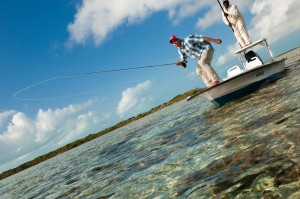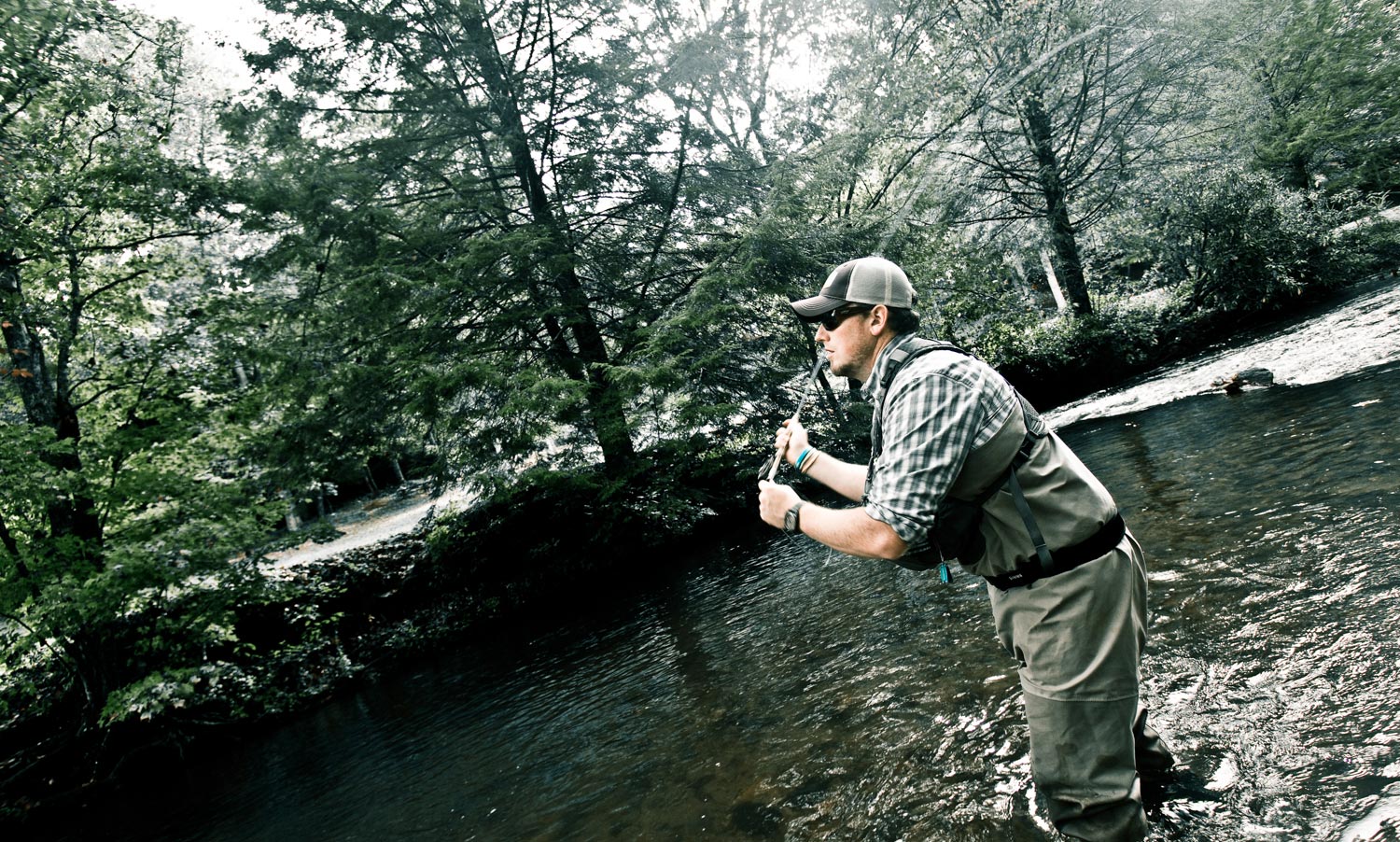By Louis Cahill
How many times did your mother tell you to stand up straight?
Well, I’m guessing she wasn’t a casting instructor. Almost every time I work with anglers on their casting, we end up talking about posture. I realize that fishing is a leisure activity, but fly fishing at least, is also an athletic activity and like anything athletic, posture matters. Better posture means better casting and that means catching more fish.
Here are a few basic tips for fly casting posture.
By far the most common problem I see in folks struggling with their casting starts with their knees. If you’ve ever stood up in a wedding, you’ve likely gotten the advice from the preacher about locking your knees. It’s apparently not uncommon for folks who lock their knees during a long ceremony to keel over like a drunk.
It makes sense; you have no real balance or control over your body when your knees are locked straight, but I can’t tell you how many folks I see trying to cast a fly rod stiff-legged. Even after I point it out, everyone is resistant to bending their knees when casting. I think they just feel silly, but would you feel silly bending your knees to hit a golf ball, or a baseball? What about throwing a pitch or shooting a basket? Would you take a shot at a big buck with your knees locked? Of course not. I can’t think of any sport you’d approach with you knees locked straight. Don’t try to cast that way either.
Bending your knees gives you solid balance and engages the powerful muscles in your core. This will give you better control of the rod and line, and add power to your cast. Having a firm stance is a huge help in making the all-important hard stop in the casting stroke.
This is never more important than when making a sidearm cast.
There are a lot of situations where a sidearm cast out performs an overhead cast, but you absolutely can’t make a good sidearm cast standing up straight. The mechanics of your body just don’t work that way.
 To make a good sidearm cast, you have to bend your knees and bend your waist toward your casting arm. This accomplishes two things. It engages your core muscles, as we discussed before, and it puts your arm in the correct plane for the cast. Your arm will now be able to follow a straight plane, keeping the essential straight line path of the rod tip, without stressing your joints. If you try making a sidearm cast standing straight, one of two things is going to happen. Either your casting hand will rotate during the stroke, deforming your loop and taking the power out of your cast, or you will torque your joints, giving you less power and control and ending with a bad case of tendentious.
To make a good sidearm cast, you have to bend your knees and bend your waist toward your casting arm. This accomplishes two things. It engages your core muscles, as we discussed before, and it puts your arm in the correct plane for the cast. Your arm will now be able to follow a straight plane, keeping the essential straight line path of the rod tip, without stressing your joints. If you try making a sidearm cast standing straight, one of two things is going to happen. Either your casting hand will rotate during the stroke, deforming your loop and taking the power out of your cast, or you will torque your joints, giving you less power and control and ending with a bad case of tendentious.
The position of your feet matters too,
though this is a slightly more complicated issue. To put it simply, there are two schools of thought and personally I use both depending on the situation. As a right hand caster, I do most of my casting with my right foot forward. Placing the casting side foot forward naturally limits the rotation of the casting shoulder. This keeps the casting stroke in a nice straight line and makes for more accurate and consistent casting.
The one exception to this is casting for extreme distance. When I know I have to go really long, I will move my left foot forward. Since casting a longer line requires a longer stroke and longer haul, opening the stance allows for more travel of the casting hand. The danger of this is that it is very challenging to keep a nice straight line casting stroke. It takes practice but it does produce results. What you don’t want to do is use an open stance for those casts where accuracy is much more important than distance, and let’s be honest, those are the casts that catch fish.
To complicate matters, we are often trying to cast from positions that offer a less than perfect surface for standing. We all know the feeling of trying make a delicate presentation perched on top of a greased bowling ball, a brisk current tugging at us, water lapping at the top of our waders and a branch in our ear. The theory behind good casting goes straight out the window. Take a minute to find a place where you can get your footing and make a well delivered cast. The fish will wait.
Louis Cahill Gink & Gasoline www.ginkandgasoline.com hookups@ginkandgasoline.com Sign Up For Our Weekly Newsletter!

Fantastic advise…same movement as throwing a ball. Even to make the ball curve to manipulate the fly. Also keeping a linear stroke with the casting hand.
This is great advice . .. right up to the point where you have screws/plates/rods installed in your back. Then you become a strong advocate of Lefty Kreh’s “dance step” approach!
Very good advice that proves we can all learn no matter how long we have been doing this ! This weeks G&G is stuffed full of treasure! Thank you guys.